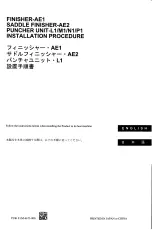
HUAWEI RP100-55T Room Presence
User Guide
8 Captions
Issue 01 (2013-12-20)
Huawei Proprietary and Confidential
Copyright © Huawei Technologies Co., Ltd
57
8
Captions
8.1 Configuring Captions
During a conference, you can create a caption, and then overlay the caption on the video sent
by the local site. The caption can be overlaid on the top, in the middle, or at the bottom of the
video.
The RP100-55T supports T.140 and non-T.140 captions. Table 8-1 describes the differences
between these two types of captions.
Table 8-1
Differences between T.140 and non-T.140 captions
Non-T.140 Caption
T.140 Caption
A non-T.140 caption will be
superimposed on the local video.
A T.140 caption will be sent to remote sites and
displayed on the remote displays without being
superimposed on the local video.
SIP and H.323 codecs can send and
receive captions.
Only H.323 codecs can send and receive captions.
No restriction is imposed on the
codecs that send or receive non-T.140
captions.
If a T.140 caption is shared, both the sending and
receiving parties in a conference must support
T.140 captions. Otherwise, a codec that does not
support T.140 captions cannot receive the shared
T.140 caption.
Non-T.140 captions can be sent only
from codecs in a conference, and
cannot be sent from the network
management system that is the
videoconferencing management
software.
If both the sending and receiving parties in a
conference support T.140 captions, a T.140
caption can be sent using any of the following
methods:
Sending the caption from the chair site
Sending the caption from the network
management system
NOTE
Captions can be sent from either party in a point-to-point
call.













































